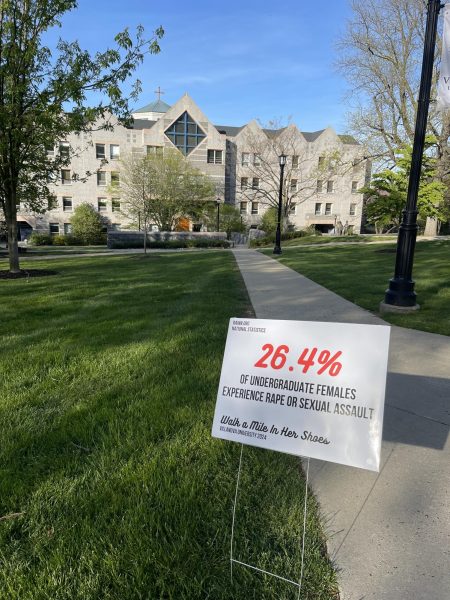Ridesharing
March 17, 2005
FOR IMMEDIATE RELEASE – March 7, 2005
RideCheck Commences Operations Across the USA and Canada
RideCheck, LLC announced today that it has begun rideshare operations across the USA and Canada at its website, RideCheck.com, just in time for Spring Break planning!
RideCheck offers students an online database of proposed road trips spanning across North America. Vehicle owners and riders benefit from the service by sharing a convenient ride and travel expenses, while reducing pollution and traffic.
“RideCheck is an advanced online database application- it can process hundreds of thousands of inquiries daily”, says Clyde Mitchell, the principal founder of RideCheck.
RideCheck.com serves any member of the North American college community and provides an inexpensive and more personal alternative to mass transportation. RideCheck allows students to search rides based on various important criteria, including departure date, gender and smoking habits. The website also has various security measures. “We have now empowered the North American college community to share rides, cut transportation costs and reduce pollution,” says Mitchell.
The site is currently free because it seeks to build a critical mass of student participation to maximize its effectiveness. “We’re currently reaching out to college students across the continent in anticipation that RideCheck will be very helpful for making cost-effective spring break plans,” says Mitchell, a former rideboard user at MIT in the 1970s. “Ridesharing is consistent with the communal ethos of college living, and the more students that use the site, the more effective it will be for everyone.”
Mitchell created RideCheck as a service to the college community. During his student days, Mitchell realized that the rideboard ride was often the best alternative, even from the suburbs of Boston to the suburbs of New York City, despite the air shuttles, busses and trains servicing the busy Northeast Corridor.
The RideCheck team hopes that the website will assist students and others in traveling about the continent, saving time and money, meeting new people and conserving fossil fuel.
Ride On!
Contact Information:
Clyde Mitchell, Founder
RideCheck, LLC
646-202-9268
NOTE – We prepared the following draft article in case you would like to write more on RideCheck and our service. You are welcome to publish the draft with or without modification, as you may decide in your sole discretion. Please consider it a first draft to revise as you wish. RideCheck waives any copyright to the following article, and every other right or interest to the following article, forever.
RIDESHARING DONE RIGHT
A. Why do people need a ridesharing service?
Traveling lengthy distances in North America has become more difficult. Gas prices are high and heightened security measures make air travel a frustrating ordeal. Public transportation may not cover your itinerary very well and, let’s face it, public transportation isn’t always comfortable, convenient or even cheap.
Given these concerns, is there a better alternative for travel?
There is now.
B. What is RideCheck.com?
A new website, RideCheck.com, offers a new spin on a college pastime – ridesharing. RideCheck.com offers travelers a searchable database of proposed trips spanning North America. From any given town to any other town, such as from Kansas City to Tallahassee, RideCheck offers students rides and riders with compatible travel plans and personal traveling preferences. “Drivers and riders benefit by sharing convenient rides, splitting travel expenses, saving time and reducing pollution,” says Clyde Mitchell, the principal founder of RideCheck.
RideCheck.com serves anyone, with or without a vehicle, looking to travel anywhere within North America. Whether your college is in the country, the suburbs or the heart of a major city, RideCheck provides a less expensive and more personal alternative to other transportation options. “We have now empowered the North American college community to share rides, cut transportation costs and reduce pollution,” says Mitchell.
C. How does it work?
So how does RideCheck work? Once you enter the site, designed with the familiar colors and themes of the American interstate highway, you can immediately search for available rides from your present location to your destination, at a time that agrees with your schedule. You can narrow your search further to rides listed by your own gender, if you like. The site then retrieves a list of rides that match your plans.
You can browse the details of each listed ride, but first you must register with the site. This helps to improve security. The details of a listed ride will include the number of riders, the gender, smoking and driving preferences of the owner of the vehicle (or the authorized user), the vehicle make, year, model and condition, and the owner’s college and rating, in addition to other ride specifics that the owner has listed. You may then accept the ride or look for other potential rides.
The site also will list rides leaving from nearby college towns. “Students at nearby colleges will post rides going to similar destinations, thus increasing your choices”, says Mitchell.
If none of the listed rides appeal to you, you may just as easily post a ride. However, you must have a car or other vehicle to post a ride. Then you register with the site and provide vehicle information. This step enables RideCheck to provide security to owners and riders.
Postings can be made up to three months in advance and can be continuously updated until the trip has been accepted by someone. Once a ride is accepted, you have to go. People are relying on you. You can post a ride so long as you will be authorized to use the described vehicle during the ride; you do not have to own it.
But what if you don’t own a car? RideCheck has a good answer. You can instruct the site to inform you when a new ride posting appears. In fact, you can have the website monitor several potential future rides. The site will email you new ride listings, and then you can decide to accept them.
The site is currently free because it seeks to build a critical mass of student participation – to maximize its effectiveness. “We’re currently reaching out to college students across the continent in anticipation that RideCheck will be very helpful for making cost-efficient spring break plans,” says Mitchell. “Ridesharing is consistent with the communal ethos of college living, and the more students that use the site, the more effective it will be for everyone.”
D. Confirmation Process – Meet Before the Ride
Once you accept a ride, the website will send you and the ride poster a confirmation email. The email summarizes the details of the proposed posted trip, including the contact information of each traveler (name, email and telephone number). The email also contains helpful suggestions for how to proceed.
One of the confirmation’s strongest suggestions is for riders to meet briefly prior to the departure date. This allows all travelers to check the ride confirmation data against the actual driver’s licenses, the actual vehicle license and the actual vehicle. RideCheck also asks students to enter their college IDs during registration, so that they too can be checked at the meeting. By meeting in advance, riders will also be able to settle any remaining details about the ride, such as departure time and the pick-up site, along with map, snack and music requirements.
If the riders are enrolled at the same college, they can check out each other through the student directory, student face book or similar websites. “Check in the face book the name and picture of each rider and the vehicle owner, and make sure that reality matches when you meet”, says Mitchell. You should consider checking out the person through mutual friends. RideCheck also recommends that you take a picture of the driver and each rider, and that the ride confirmation be forwarded to a close friend or parent, along with the pictures, so that someone else is aware of the upcoming trip.
The person who accepts the ride must comply with the restrictions set forth by the poster of the ride, so that the process works simply. (Remember, RideCheck is a massive continent-wide database, and so the process must be streamlined.) Also, be sure to fully read the extra comments field in case the trip poster has any unusual preferences indicated there. You will have to follow them.
E. How is quality assured?
Each driver and rider will be rated after each trip. This will help to discourage any user from misbehaving or backing out from travel plans. Bad ratings mean less desirability when future rides are posted.
According to Mitchell, who is also a business lawyer, “The intent of RideCheck is to offer a ride, subject to the description of the ride and the related vehicle, nothing better and nothing worse. RideCheck relies on the general goodwill of the users, and most of us will apply common sense in our judgment of a ride. If a rider does in fact travel from town A to town B in accordance with the ride description, and the costs of fuel and tolls are shared, then the ride should be considered satisfactory and the ratings should be ‘good’.”
F. How does RideCheck compare cost-wise to other transportation alternatives?
Assume a 300-mile trip in a vehicle with a fuel efficiency of 20 miles per gallon, a gasoline price of $2 per gallon, and no tolls. Therefore, 15 gallons of gas will be consumed at a cost of $30. If an additional rider went on the trip and the standard RideCheck rule was followed, the gas cost would be shared equally, and the vehicle owner would receive $15, thus saving $15.
The rider’s cost would be $15. Compare this to the cost of bus fare from St. Louis to Chicago at about $40 minimum plus the cost to and from the bus terminals. The rider would save at least $25 and probably would travel door-to-door. In addition, the rider would avoid timetables, waiting time in terminals, and commuting to and from terminals. Moreover, the company probably would be pleasant and the car seat would be more comfortable.
In comparison, the bus trip generally would be slower. (Traveling the same distance by train generally would be more expensive by approximately 30%.)
A longer trip will generate more cash savings for RideCheck users and save more time because a private vehicle does not stop as frequently as a bus or a train and you will not have to follow a designated route. You are more likely to avoid congestion and your rider group may know a good short-cut or two.
G. What is the story behind RideCheck?
RideCheck.com was founded by Clyde Mitchell, a ride board user at MIT in the 1970s. During his student days, Mitchell realized that the rideboard ride was often the best alternative, even from the suburbs of Boston to the suburbs of New York City, despite the air shuttles, busses and trains servicing the busy Northeast Corridor.
The RideCheck team now consists of twenty professionals with substantial experience in all relevant fields, including advanced information database technologies. The RideCheck team hopes that RideCheck will assist many people in traveling about the continent, saving money and time, meeting new people and conserving fossil fuel.
H. Conclusion
RideCheck.com is the only comprehensive North American rideshare website. While it may not be the first rideshare service, it certainly offers the most features. Indeed, RideCheck is the most convenient, offers the most security features, and provides the only searchable continental database.
While other rideshare sites have frustratingly few day-to-day ride listings, RideCheck.com should offer a good selection of rides as more and more students learn about it and post rides and ride monitors. Whether your interest is saving money or time, convenience, improving the environment, or simply finding a ride, RideCheck.com offers a good solution.












